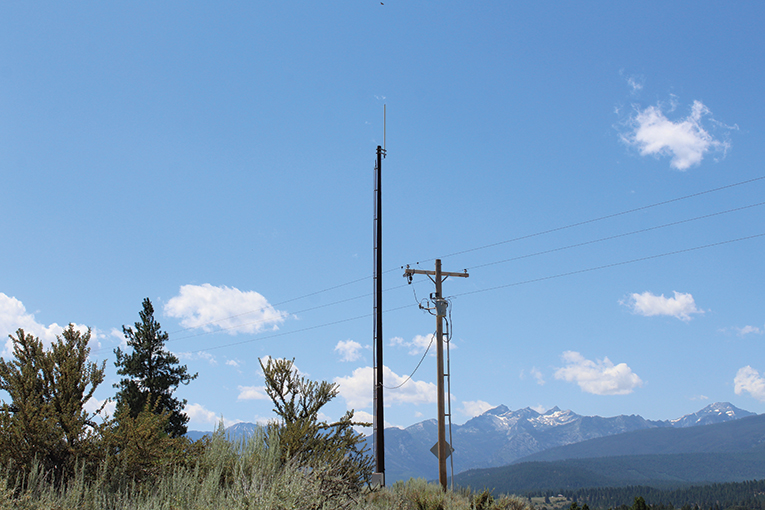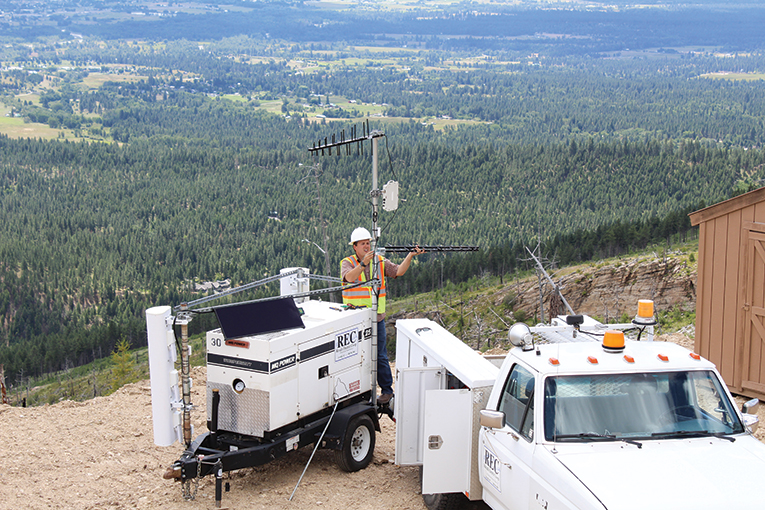Early adopters of Power Line Carrier (PLC) systems helped spark a trend that fundamentally changed how cooperatives operate. These pioneers saw the value of implementing Automatic Meter Reading (AMR), the efficiencies it would bring and the way it dramatically improved operations. But while those first adopters drove significant value out of their investments, more effective alternatives have emerged to help co-ops meet the challenges of today.
The primary benefit of PLC and the reason many adopted it in the first place is that it uses existing utility wires to transmit data. These systems performed well for years, but requirements have changed with the evolution of the smart grid. As the world continues to become more reliant on real-time connectivity and secure data, co-ops have the opportunity to seamlessly transition to wireless network infrastructure to build resiliency and gain better control over the complex modern grid.
The emergence of smart utility networks
For co-ops seeking to harness wireless communications as the means for delivering new benefits, smart utility networks have become an attractive solution. This remote infrastructure offers a path to migrate away from PLC with ease and in a way that can help build a system for the future.
Multiple options exist for transitioning to wireless communication networks. Mesh systems include radios that communicate with each other using messages that hop from meter-to-meter. Each point on the network can receive, store and transmit signals to other network points in many different directions. However, a major drawback with mesh systems is that they use an unlicensed spectrum for their communications and operate on publicly-available radio frequencies – which can fall victim to interference from other users.
Point-to-multipoint (PTMP) communications systems offer an alternative to the endpoint-hopping framework of a mesh system. Allowing utilities to transition away from PLC using primary-use licensed spectrum from the Federal Communications Commission means better connectivity with meters and other smart devices and ultimately, smarter infrastructure. With PTMP architecture, a base station communicates to many endpoints directly within a large coverage area. These endpoints are frequently meters but also can be load control modules, lighting modules, or distribution automation endpoints. Before installing a PTMP system, a propagation study should be used to determine optimum base station deployments to ensure maximum performance. This network design is ideal for many different topographies but particularly excels in rural areas and allows flexibility so utilities can deploy strategically without impacting current operations.

A collector pole stationed in the heart of Montana’s Bitterroot Valley collects vital information from newly installed meters.
By operating on the licensed radio frequency (RF) spectrum, PTMP systems can transmit much farther than mesh, with twice the transmitting power of a system operating in a public frequency band. The increased range enables each endpoint to communicate directly with a base station without having to hop from endpoint to endpoint to send their data back to the headend software. This design also dramatically reduces the number of times an endpoint has to transmit its data to the co-op. PTMP endpoints only need to communicate a few times a day.
Point-to-multipoint systems can also listen and send messages at the same time, making them true two-way networks. And because licensed RF spectrum networks are private, each co-op is assigned a bandwidth range for their exclusive use. These licensed RF channels are protected by federal regulations, and interference can be mitigated quickly and efficiently with the full backing of the United States government.
Adding outage management and more
In a PLC network, outage information is compromised when the distribution network is disrupted. Because meters have a last-gasp capability, PTMP architecture enables a much higher outage success rate. Each endpoint transmits its power outage message to the network without having to rely on a neighboring endpoint's communications path to the takeout point. During outage and power restoration events, organizations have seen a 33 percent reduction in service restoration times due to the increased amount of useful outage information.
As a network architecture solution, a PTMP system can support today's applications while being able to add new capabilities, data rates and capacity on the same system. Moreover, by supporting solutions on one network, existing assets can continue to be used while new technologies are being implemented. Co-ops shouldn't need to go back to their commission, city council, or members to request funding for new applications. They can build a business case around the new endpoints and applications they would like to deploy on their existing network.
Case-in-point: How a Montana co-op moved away from PLC
Ravalli Electric Cooperative (REC) was the first co-op in Montana, formed in 1936, during a national movement to ensure farmers and ranchers received the same access to electricity as residents in the big cities. Today, REC has more than 10,000 members living and working across a varied landscape of grassland valleys, national forests and mountain ranges in the state’s southwest region.
As a member-owned utility, Ravalli Electric has remained fully committed to the people and community it serves. That means evolving to meet customer demands and continuing to deliver value. And regarding the co-op’s aging PLC system, it meant finding a new solution when it was time to move on.
Changing times
For years, the co-op benefitted from using a PLC system to automate the meter-reading process, but problems occurred as the system aged. Communications modules failed more frequently, which forced technicians to make repeated trips into the field to obtain meter reads. In fact, it got to the point where technicians were doing about 400 manual meter reads each month due to failures within the PLC system.
As the old system started to eat up more time and resources, the staff knew that they needed to make a change. REC decided to transition away from PLC technology to improve meter monitoring and get more control over their network. The co-op needed a system capable of communicating with meters across geographically diverse terrain and streamlining processes for operational efficiency with fast, accurate meter data collection.
After testing and researching a variety of systems, including ones that delivered meter data over mesh networks, REC decided to go with a smart utility network. The team, impressed with the system’s long-range, accuracy, speed and outage management capabilities, soon moved forward with a full deployment.
A new season begins
As part of its new infrastructure, REC installed a point-to-multipoint network paired with smart electricity meters – which provide access to real-time data over a secure two-way system. Since deploying, the co-op has benefited from outstanding read rate success across its smart meters.
In addition to the real-time speed and accuracy of its system, REC has proactively advanced outage management and response efforts. The co-op used to be more reliant on members to notify them of outages, but now the new network quickly alerts Ravalli Electric to any potential issues. With its multi-point network system, staff can spot outages and begin service restoration before customers even know there’s an issue.
Meter alarms, such as low voltage and overcurrent, also help the co-op identify potential issues, which allow the staff to quickly address problems and ensure a high quality of service to members.

Ravalli Electric Cooperative’s IT Specialist Shaun Barnes tests a remote communication site on a mountaintop in Hamilton, Montana.
Advancing sustainability
Since deploying, Ravalli Electric has eliminated three to four days of meter readings per month with another two days of savings expected once the meter change project is complete. The co-op is also helping members meet their individual energy efficiency goals by providing hourly read data. Members can go online and get accurate updates on their usage that allow them to adjust and curb their energy consumption.
With the full deployment nearly complete, REC is already taking steps to get more value out of their network. The co-op recently added a phase detection application to their system to determine the distribution phase of each meter and proactively balance grid load. The ability to expand the network and add new applications this way offers a significant benefit. REC can continue to learn from actionable data to stay on the cutting edge and provide great customer service for its members.
The bottom line on PLC
Early PLC network adopters had one primary objective when launching their system: automating meter reading. Consider it mission accomplished. PLC systems were able to help utilities reduce truck rolls, automate billing and improve operations dramatically. However, times change, and customer requirements are always evolving.
As new smart city solutions come to the fore, co-ops like REC are seeing the benefits of moving to a two-way, point-to-multipoint network. This framework offers the capability to maximize connectivity through a robust and secure network that has more transmitting power than any other system. Unlocking opportunities to build a smarter and more resilient grid, co-ops can continue evolving with strength and confidence.

Levi Dunn is the staking supervisor at Ravalli Electric Cooperative. Dunn has 11 years of experience in distribution engineering design.

Kenny O’Dell is a senior director for Sensus, a Xylem brand. O’Dell has more than 20 years of experience in electronic design. He holds a computer science degree from the University of South Carolina.







